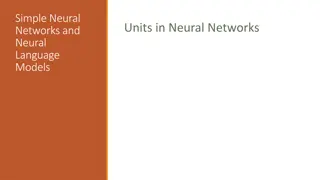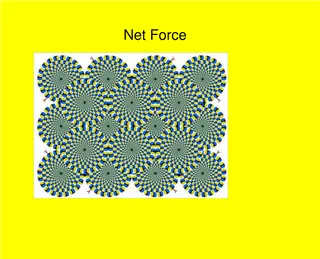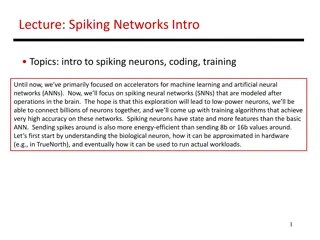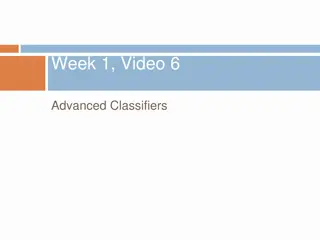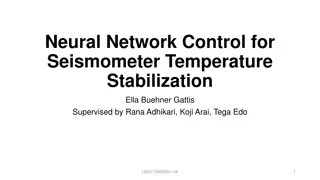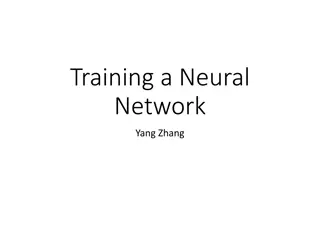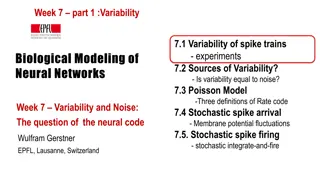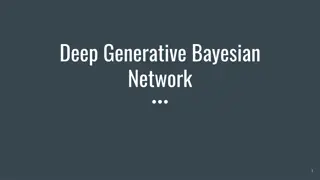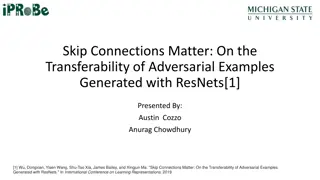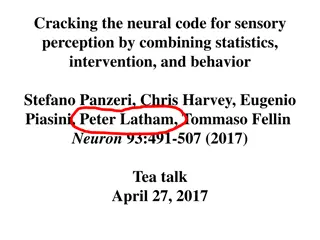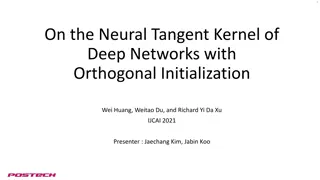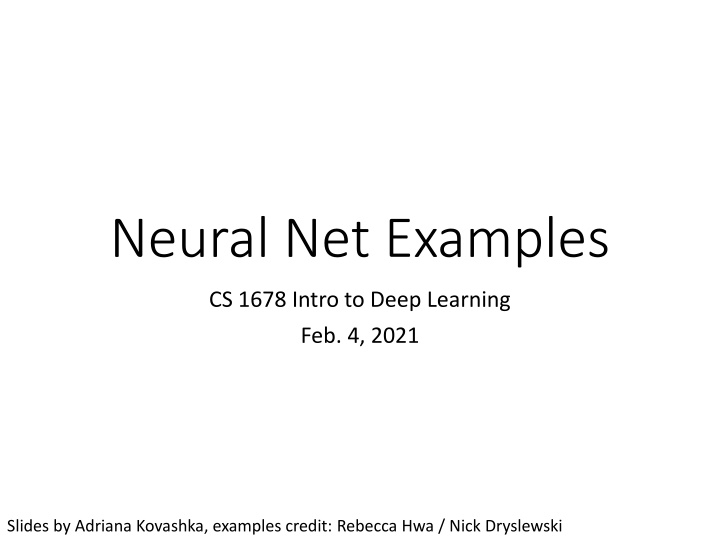
Neural Net Examples
Explore examples and computations in neural networks, covering architectures, activations, backpropagation, and training. Dive into weight updates, errors, and expectations for final weights, providing insights into deep learning concepts.
Download Presentation

Please find below an Image/Link to download the presentation.
The content on the website is provided AS IS for your information and personal use only. It may not be sold, licensed, or shared on other websites without obtaining consent from the author. If you encounter any issues during the download, it is possible that the publisher has removed the file from their server.
You are allowed to download the files provided on this website for personal or commercial use, subject to the condition that they are used lawfully. All files are the property of their respective owners.
The content on the website is provided AS IS for your information and personal use only. It may not be sold, licensed, or shared on other websites without obtaining consent from the author.
E N D
Presentation Transcript
Neural Net Examples CS 1678 Intro to Deep Learning Feb. 4, 2021 Slides by Adriana Kovashka, examples credit: Rebecca Hwa / Nick Dryslewski
First architecture z0 x0 w(1)11 w(2)11 x1 z1 y1 x2 input hidden output
Computing activations In all examples, x = [x0 x1 x2], where x0 = 1 Assume sigmoid activation function Initialize all weights to 0.1 First example: x = [1 1 0] Second example: x = [1 0 1] Third example: x = [1 1 1]
Computing activations First example: At hidden: z1 = ? At output: y1 = ? ypred = ? Second example: At hidden: z1 = ? At output: y1 = ? ypred = ? Third example: At hidden: z1 = ? At output: y1 = ? ypred = ?
Second architecture x0 z0 y1 x1 z1 y2 z2 x2 w(1)22 input hidden output
Computing activations In all examples, x = [x0 x1 x2], where x0 = 1 Assume sigmoid activation function Initialize all weights to 0.05 First example: x = [1 1 0] Second example: x = [1 0 1] Third example: x = [1 1 1]
Computing activations First, second, third example: At hidden: z1 = ? z2 = ? At output: y1 = ? y2 = ? ypred = [1 1]
Training the first network Perform backpropagation using stochastic gradient descent (one sample at a time) Weights are initially all 0.1 Learning rate is 0.3 Sigmoid activation function at hidden and output d s(x) / dx = s(x) (1 s(x)) dx Samples have the following labels: First example: x = [1 1 0], y = 1 Second example: x = [1 0 1], y = 0 Third example: x = [1 1 1], y = 1 Preview: What do you expect final weights to be?
Learning from first example First example: x = [1 1 0], y = 1 Weights are w(1)10 = w(1)11 = w(1)12 = w(2)10 = w(2)11 = 0.1 Activations are z1 = 0.5498, y1 = 0.5387 Compute errors: y1 = ? z1 = ? Update weights: w(2)10 = w(2)10 ? w(2)11 = w(2)11 ? w(1)10 = w(1)10 ? w(1)11 = w(1)11 ? w(1)12 = w(1)12 ?
Recap Do the w(1) weights we obtained make sense?



